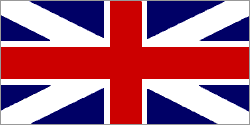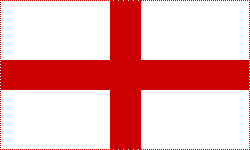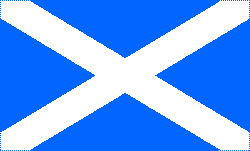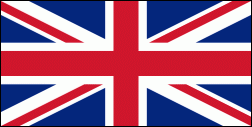Origins of the Loyalist Flag

The Flag so prominently flown by the United Empire Loyalists is the Queen Ann Union Flag. This flag was originally designed by order of King James I of Great Britain who ascended the throne in 1603. From the second half of the 13th century until 1603, England used a white flag with the Red Cross of Saint George, as its national banner. However when Queen Ann, born in 1665, the younger daughter of James VII inherited the throne in 1702, modifications were made to the James I Union flag.

The flag of Scotland was the white saltire of Saint Andrew on a blue background. The earliest references to this banner can be traced to the 12th century and it was certainly in use by the 13th century.

Days before she died in 1603, Queen Elizabeth I, who never married, named James VI of Scotland, son of her cousin Mary Stuart, Queen of Scots, as her heir. He became James I of England. On his accession, he declared his intention to be the first British monarch to be known as King of Great Britain. Consequently, in 1606 he ordered a flag to be devised to mark the union of the two thrones. This was called the Union Flag. So as not to give priority to either flag, the field of the new flag was made blue and the Red Cross of Saint George, edged with white, was imposed on the white saltire of Saint Andrew.

This was the flag under which the United Empire Loyalists entered British North American (Canada) after leaving the Thirteen Colonies following the American Revolution in 1776. Hence, the term "Loyalist Flag". The Loyalists have never forgotten nor abandoned the strong ties of this heritage.

The flag now flown throughout Britain and her possessions includes the saltire of Saint Patrick which is red on white background. This was added in 1801 during the reign of King George III following the Act of Union in 1800 under which Ireland was incorporated along with England, Scotland, and Wales to form the United Kingdom. The origin of the term "Union Jack" is uncertain. The term "Jack" was first used in the British Navy as the name for the Union Flag flown at the Main Masthead. Strictly speaking, the term "Union Jack" applies to the Union Flag flown from the bow of a ship. After the legislative union of England and Scotland in 1707, during the reign of Queen Ann, the Union Flag became known as the British Flag. With the exception of the Commonwealth period (1649 - 1670) under the control of Oliver Cromwell, the Union Flag and British Flag have flown uninterruptedly for almost four hundred years.
A person who collects or is interested in flags is referred to as a vexillologist. Check the following resources for additional information about flags and the proper protocol.


